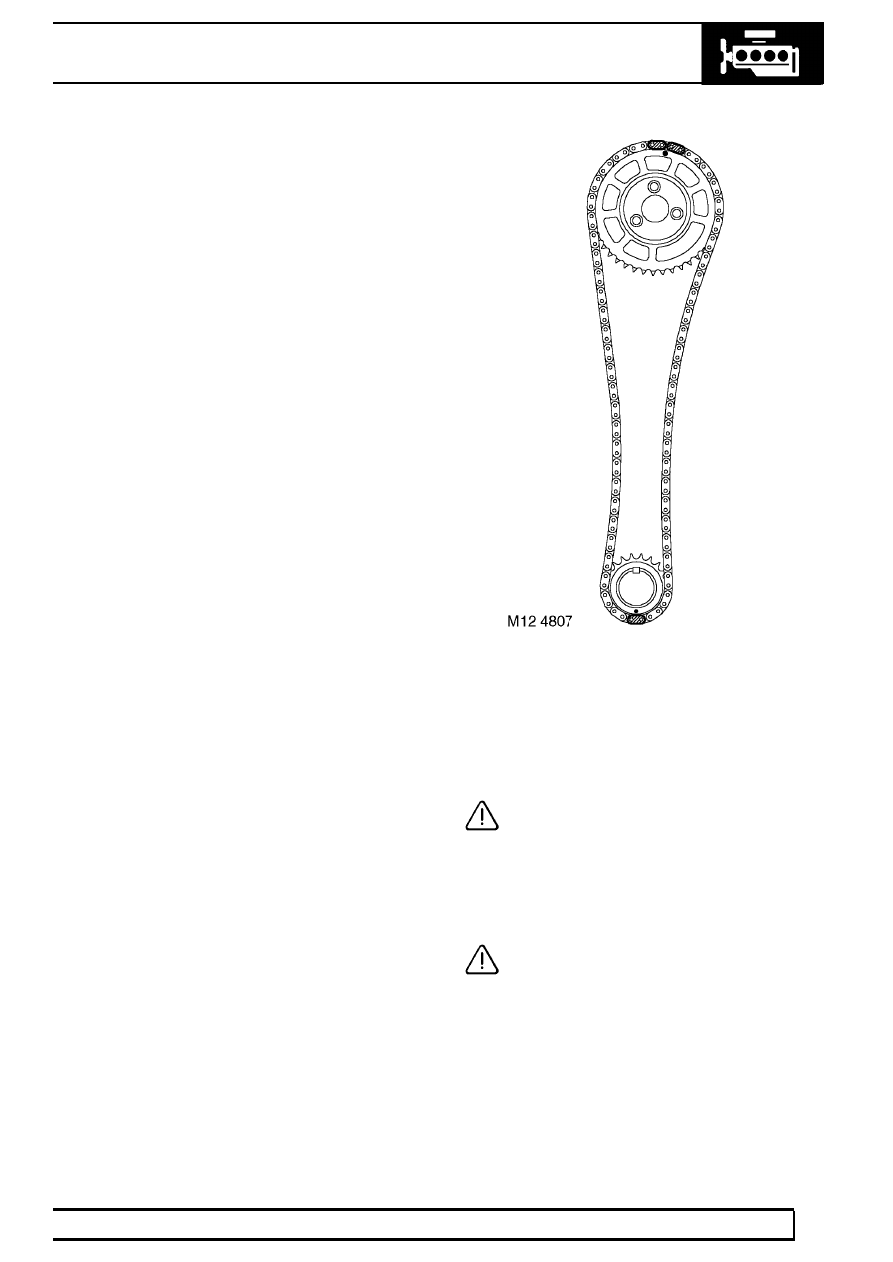Defender (1999-2002). Manual - part 43

ENGINE
29
OVERHAUL
10. Remove crankshaft pulley bolt.
11. Fit Woodruff key to crankshaft.
12. Fit oil pump drive chain to rear row of teeth on
crankshaft sprocket i.e. teeth furthest away from
timing mark on sprocket.
13. Fit sprocket to crankshaft ensuring that timing
mark on sprocket is facing towards front end of
crankshaft.
14. Fit oil pump drive sprocket to oil pump and drive
chain ensuring that ’D’ shape on sprocket is
located on flat on oil pump drive shaft.
15. Apply Loctite 242 to threads of oil pump drive
sprocket bolt, fit bolt and tighten to 25 Nm (18
lbf.ft) .
16. Fit timing chain fixed guide, fit bolts and tighten
to:
M6 bolt - 10 Nm (7 lbf.ft)
M10 bolt - 45 Nm (34 lbf.ft)
17. Fit timing chain adjustable guide, fit bolt and
tighten to 25 Nm (18 lbf.ft) .
18. Fit camshaft sprocket to timing chain with timing
mark on sprocket between the 2 coloured links,
suitably retain sprocket to chain.
19. Fit timing chain to crankshaft sprocket aligning
coloured link to timing mark on sprocket.
CAUTION: Ensure timing marks are
positioned as shown - No. 1 piston at TDC
firing.
20. Apply an even film film of sealant, Part No. STC
4600 to mating face of timing cover and spread
to an even film using a roller.
CAUTION: Assembly and bolt tightening
must be completed within 20 minutes of
applying sealant.
21. Fit timing cover, fit bolts in their original fitted
positions and working from the centre outwards,
tighten progressively to 27 Nm (20 lbf.ft) .